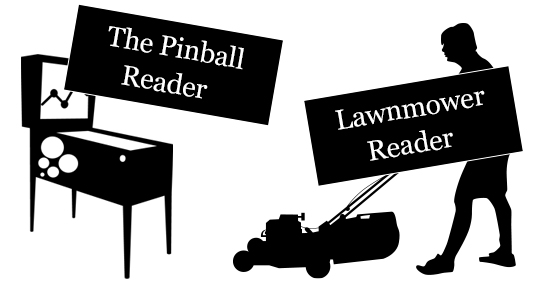Technology changes quickly, but humans don't
February 2021 - Matt Edwards
So what kind of online reader are you? The pin-ball, the lawnmower, or the classic F-shaper? After 20 years of eye tracking reports on how we read online, the conclusions show that our online reading behaviours have remained the same.

Online eye tracking studies have been taking place now for over 20 years, with the latest of these reports released in 2020. It has been known for many years that online users don’t read word for word or in a linear order, but instead are more likely to lightly scan over a page. The methodology used behind these findings use eye tracking software. The eye tracking equipment will track a user’s gaze on the screen, which in turn creates gaze patters.
1990's Studies
The first eye tracking studies took place in the late 1990’s. These studies first showed the surprising reading behaviours of the online user, compared to that of a more traditional print media. The studies found online readers would rarely read web pages word for word, or in a particular order; instead they would ‘scan’ the pages picking out individual words or sentences. As designers, we had to adapt and design and build web pages that accommodated this reading behavior, and as a result design scanable websites and pages. To answer this, pages were designed to include:
- Clear noticeable headings and subheadings
- Inverted pyramid style (conclusion first)
- Bulleted lists
- Plain language (removal of ‘marketese’ promotional writing)
- Content specific imagery that is front loading
From these early studies gaze patters were established and named. Two of the most well-known are below
- The F-shape:
A user will scan across and down the page in an F-shape motion, searching headers and keywords of interest.
- The Layer cake:
Layer caking is where the content is split into layers, and split via headers, subheading and links etc. A user will then consume content within these individual layers whilst scanning down a page.
2020 Study
So what has changed since the first reports and findings from the late 1990s?’s. The technology and software has certainly advanced at a rapid rate. We no longer have fixed layouts but instead have responsive ones. Responsive layouts that have to respond to a vast number of devices and varying screen sizes. We now have far more flexibility and the ability to produce endless layout designs and options of our choice. From this a few new gaze patters have emerged:
- The Lawnmower
This is when a user’s eye will travel from the left of the page and move to the right. Then directly drop down and flip across from the right to the left of the page and so on. The same motion in which you would cut your lawn.
- The Pinball:
This is a gaze pattern that has arose from more complex search results. A user’s eye will scan results by bouncing between different elements on the right sidebar and center, going back and forth.
A summary conclusion from the latest report found almost all of the gaze patters that were observed in the original findings were still present today, f-shape, layer caking and zig zagging to mention a few. People still scan rather than read. Users will still jump around a page, skipping content, backtracking and re-scanning again. Users still scan for keywords, headings and images that are the most relevant to their needs and overall requirements.
Take Away
Although technology and platforms are changing and advancing at a rapid rate, our human behavior and requirements still remain the same. Good design and user experience design is about understanding our users’ needs and behaviours, and then addressing these within our designs.… creating a product or an experience that is rewarding and profitable to both the end user and the supplier.
“Even though designs have shifted over the past two decades, online reading behaviours have remained, at their core, fundamentally similar. Technology changes quickly, but humans don’t.”